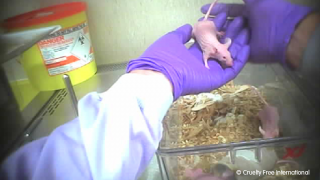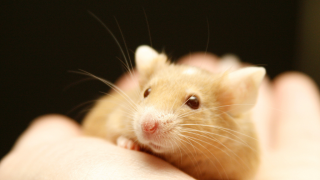Alzheimer’s disease is not thought to occur naturally in any other animal except for humans

Today is World Alzheimer’s Day and as we spare a thought for those who suffer from this debilitating disease, we also reflect on decades of pointless animal research and the countless animals who have suffered and died.
Alzheimer’s disease is not thought to occur naturally in any other animal except for humans. Despite years of attempting to mimic the symptoms in animals, no experiment has been able to reflect all of the features of this complex human condition.
Much current research focuses on the use of genetically modified mice, who are bred to carry specific genes known to cause some cases of Alzheimer’s in humans. However, 90% of Alzheimer’s disease cases are spontaneous and are thought to be caused by lifestyle and environmental factors, rather than genetics. Other experiments involve deliberately damaging the brains of mice, rats and monkeys to try to mimic an Alzheimer’s-like condition. However, in humans, the symptoms of the disease progress slowly, worsen over time and are irreversible, whereas in these crude animal experiments, symptoms are immediate in response to the brain damage and may lessen or reverse over time.
Perhaps not surprisingly then, despite decades of deliberately inflicting suffering on animals in cruel tests, there is still no cure for the disease in humans. In fact, most Alzheimer’s disease drugs fail in human trials despite promising results reported in the preceding animal tests. A recent review found that out of 244 new Alzheimer’s drugs tested in humans in the decade between 2002 and 2012, only one was approved for marketing.1 This represents a success rate of just 0.4% for Alzheimer’s drugs - a staggering 99.6% failure rate (excluding 14 compounds currently in final phase three human trials). Clearly the current approach of testing potential treatments on animals is highly unsuccessful and a new more humane way is needed.
Source:
Alzheimer’s disease drug-development pipeline: few candidates, frequent failures. (2014). Alzheimer’s Research & Therapy, 6(4): 37. Original article can be found here: http://www.ncbi.nlm.nih.gov/pmc/articles/PMC4095696/












